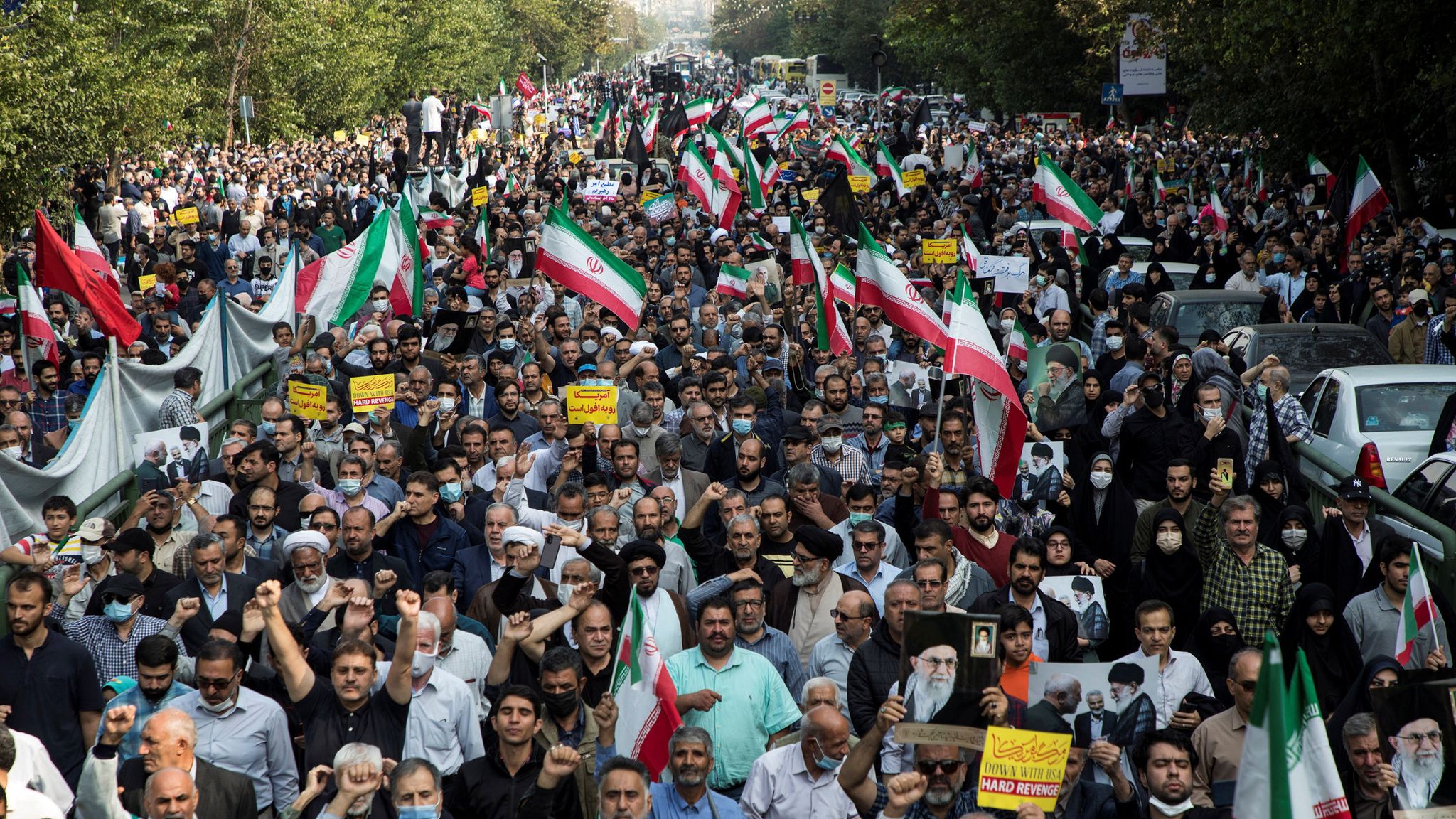On September 13, 2022, Iran’s morality police detained Masha Amini for improperly wearing her hijab. Once in custody, Amini was reportedly beaten by police, leading to her death three days later. In the following weeks, Amini’s death became a rallying cry for mass protests. Across the country, young women are leading demonstrations, burning their hijabs, and dancing in the streets as others chant “death to the dictator.” While these protests are primarily led by young women, Gen Z and millennial men have also joined the resistance. Iran’s youth are tired of the oppressive, religious fundamentalist government—and with a median age of approximately 32 years old, Iran’s population is young and likely to demand change from their government in the future. Some older generations have joined the current movement. Unlike protests in Iran’s past, the current wave of unrest has united people across ages, regions, and socioeconomic statuses. More than a month after Amini’s death, there is no indication that the unrest will die down. This is a sign that the current protests in Iran are about more than just the brutality of the morality police—people are fed up with the government.
Over the past 20 years, the Iranian people’s relationship with their government has deteriorated. Today’s protests in Iran are about a combination of social, economic, and political factors which the Iranian people have demonstrated against for decades. In July 1999, after a similar crackdown by police, students demonstrated across the country. Although these protests quickly died down, current protests again see students and young people at the forefront.
In June 2009, mass protests followed the disputed reelection of President Mahmoud Ahmadinejad. His opponent, Mir Hussein Moussavi, had promised to ease Ahmadinejad’s hardline policies. Upon the announcement of Ahmadinejad’s reelection, Moussavi disputed the results, triggering thousands to protest in the streets. These disputes were later given some credibility. The Royal Institute of International Affairs in London, or Chatham House, conducted an analysis that showed that Ahmadinejad’s victory was highly irregular. Among the irregularities was reported voter turnout greater than 100 percent in some areas and complete shifts in the political leanings of others. The highly contested results triggered demonstrations in which more than 80 people were killed.
In 2017, high unemployment rates and inflation resulted in mass economic hardship for the people of Iran. This economic downturn and reports of government corruption again triggered people to demonstrate against the government. Problems with elections, the economy, and police violence have led to protests in Iran for years. Now, however, the country is faced with issues regarding all three.
Iran held elections for their new president in June of 2021, with Ebrahim Raisi being declared the winner. Like in 2009, this election faced legitimacy issues. Raisi is a hardline conservative who served as the country’s Judiciary Chief and won favor with the Ayatollah. As Judiciary Chief, Raisi promoted violence against peaceful civilians and extrajudicially ordered the execution of thousands of prisoners in Iran’s jails. A candidate’s ability to run for president in Iran is determined by the Guardian Council, a 12-member voting body headed by the Ayatollah. During the 2021 election cycle, the council disqualified any opponent to Raisi that had a legitimate chance of winning the elections, leading to mass outrage.
At the same time, the government’s actions toward nuclear enrichment have invited US and Western sanctions, stalling the economy. With decreased oil exports and foreign trade overall, Iran has seen a decline in GDP and an increase in fiscal deficits. While these sanctions were implemented to punish the government of Iran, they disproportionately affect ordinary people. Iran’s 2021 inflation rate stands at 40 percent, bringing even the most basic necessities out of the reach of ordinary Iranians.
The young girls who initiated the protests have been joined by thousands of men and women of all ages to demonstrate against the government. In mid-October, the country’s oil workers joined the demonstrations by holding a series of strikes. Oil is vital for Iran to sustain its already downtrodden economy—without oil production, the country risks further economic deterioration.
With the existing tension of the recent election and bear economy, the death of Masha Amini and subsequent police violence was the straw that broke the camel’s back. More than a month after Amini’s death, the protests are still going strong. People are using social media to organize and share the message of resistance. This prompted the Iranian government to implement a nationwide internet blackout, causing even more frustration.
The current protests in Iran are about much more than restrictive hijab laws. These protests are a proxy through which people are showing their resentment toward a government that seeks to control them, disregards their votes, and plays dangerous games with the international community at the expense of economic security. As seen in 1979, Iranian people will fight for self-determination. That is precisely what we are seeing now.
